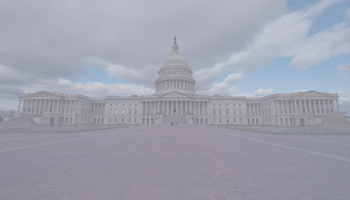
FTZ’ine September 2022
September 1, 2022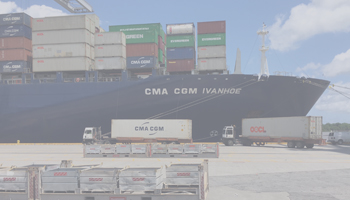
FTZ’ine November 2022
November 1, 2022The “R” Word
It’s back. Despite strong employment numbers, talk of a global and US recession is getting louder. How fast our economy might slow is confusing the stock market, leading to wild swings but a decidedly downward direction for the year. Global investors seeking a safe haven are buying US dollars. That makes it a great time to visit Europe and Asia, but a lousy time to try and sell your US products there.
Even though we stopped doing the King and Queen thing 250 years ago, it was hard not to be impressed by Queen Elizabeth’s regal personage. May she rest in peace. With sharp challenges ahead, we will quickly learn if the loss of her steady hand will spell trouble in the UK.
The new federal government fiscal year started on Saturday. The House passed a Continuing Resolution less than 12 hours before funding would have lapsed and caused a shutdown. The CR only provides for 10 more weeks of government operation. The new fiscal year means MPF caps went up for US importers, including FTZs.
Unresolved contract negotiations for rail and dock workers remain a black cloud this month hanging over US supply chains. Hurricane Ian and its wide path of destruction in Florida and Puerto Rico will also demand close attention from the trade this month.
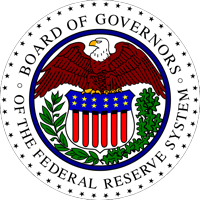
Top Story: The Drums Are Getting Louder
The world may be edging toward a global recession as central banks across the world simultaneously hike interest rates to combat persistent inflation, the World Bank said late last week.
Federal data showed US consumer goods and services rose in price by 6.2% in August, nearly a four-decade high and worse than the 6% increase economists were projecting. So far, consumer prices have risen 8.3% percent in the past year.
Last week, Cleveland Fed President Loretta Mester acknowledged the central bank "got the persistence and magnitude" of inflation wrong, and said officials won’t stop raising interest rates to fight high inflation even if the economy tips into recession. Gulp.
On Friday, the stock market closed out its worst month since March 2020 when COVID-19 hit. The S&P 500 is down nearly 25% this year, and no good economic news to reverse the trend is in sight. Shipping giant FedEx on Friday warned of a slowdown in its business, particularly in Asia and Europe. Executives at G.E. and JPMorgan Chase have also delivered gloomy outlooks.
The Fed’s rate increases, including a .75% increase in September, are having the most direct impact on housing. Rising mortgage rates have slowed home buying significantly, though prices appear to still be rising in most parts of the country, if more slowly than they once were.
International trade has not escaped the actions to cool the US economy. The Port of Los Angeles has reported a slowdown in cargo operations in August after record-breaking cargo volume in 2021 and the first half of 2022. The port handled an estimated 806,000 TEU in August, approximately 15 per cent less than the same period a year ago. "Global growth is slowing sharply, with further slowing likely as more countries fall into recession," World Bank President David Malpass said, adding his worry that these trends would persist, with devastating consequences for emerging market and developing economies.
Economies around the world are slowing more than expected, as Russia’s war in Ukraine drives inflation and the cost of energy higher, forcing the Organization for Economic Cooperation and Development (OECD) to scale back its projections for growth in the coming years.
Although it shied away from forecasting a global recession, the organization downgraded its outlook, maintaining its expectation that global economic growth would be a “modest” 3 percent this year, and an even weaker 2.2 percent next year, down from 2.8 percent a few months ago.
“The world is paying a very heavy price for Russia’s war of aggression against Ukraine,” said Mathias Cormann, the OECD’s Secretary General.
Tech Tip: CBP Looking at FTZ Weekly Estimates – Be Sure You Are Reporting Correctly
CBP recently provided guidance in the form of an updated FAQ and instructions in the Entry Summary CATAIR that tells zone operators that every HTS/COO/MID combination found on the Entry Summary (7501) must have been reported on the corresponding Weekly Estimate (3461). For some FTZs, this is a change in practice, and may even contradict instructions previously received from their CBP port.
For some FTZs, including every possible HTS/COO/MID combination on the Weekly Estimate will result in exceeding the 999 line limit of the filing. In practice, FTZs may be reporting each tariff code (HTS) managed in the zone, each manufacturer (MID) from whom goods are obtained, and every Country of Origin (COO) of goods on the 3461, but not in every possible combination to keep the estimate to less than 999 lines.
In an FAQ included on their website, CBP states that a supplemental FTZ Weekly Entry must be filed when the operator anticipates that an HTS/COO/MID combination not previously reported on the week’s estimate will be shipped from the zone into US commerce. CSMS #53267891 announced that the Entry Summary Create CATAIR was also updated to include a clarification note that the FTZ Line Item Quantity on the Summary cannot exceed the FTZ line item quantity reported on the corresponding Cargo Release Line.
This has some operators wondering what happens to unnecessary estimates and how to manage the supplementals in conjunction with their weekly entry privileges. If you have questions about your weekly estimates, please send them to us at Info@iscm.co.
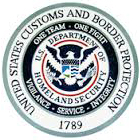

Work Stoppage Derailed At Last Minute
Former Boston Mayor and now US Labor Secretary Marty Walsh secured a major policy victory for President Biden by working through negotiations to avert a national strike by freight railroad workers.
The labor agreement, which has yet to be ratified by union members, was reached after round-the-clock contract discussions. The Associated Press reported the deal is retroactive to 2020, and rail workers will receive a 24% pay increase and $5,000 in bonuses. Railroads also promised to ease scheduling policies.
Rail workers have voted on the tentative deal between the unions and the railroads, but to avoid any disruption before November elections, some unions have postponed their vote count until mid-next month.
If any of the 12 rail unions fail to ratify a new contract, nearly 125,000 rail workers could be headed for a strike right before Thanksgiving, unless Congress intervenes.
The Railway Labor Act grants Congress the authority to intervene during worker strikes in industries that are seen as critical to the economy, such as railroads. The last time Congress voted to end a rail strike was in April 1991.
"The Biden Administration applauds all parties for reaching this hard-fought, mutually beneficial deal," Secretary Walsh wrote on Twitter. "Our rail system is integral to our supply chain and a disruption would have had catastrophic impacts on industries, travelers and families across the country."
The agreement would mandate two-person crews, cap health care contributions and allow workers to take time off for medical appointments or other scheduled events without being penalized, all key concessions won by unions.
A problem however is that the tentative agreement only applies to the the two largest rail unions, but not the other unions that agreed to contracts based on the less worker-friendly guidance from a federal board.
Those include nearly 5,000 rail workers at the International Association of Machinists and Aerospace Workers who rejected their contract and authorized a strike, postponed for the moment while negotiations continue.
But Speaker Nancy Pelosi (D-Calif.) said Thursday that Democrats were ready with a resolution to block a railroad shutdown if negotiations collapsed. She didn’t indicate whether the bill would impose a new contract, appoint arbitrators or simply prevent a walkout.
“Thankfully this action may not be necessary,” Pelosi said in a statement.
The contract talks included Union Pacific, Norfolk Southern, BNSF, CSX, Kansas City Southern and a number of other railroads, so the entire country would have been affected by a strike.
UFLPA Jumps The Pond
The European Union unveiled plans last month to ban products made with forced labor, in an effort to crack down on a modern-day form of slavery that the U.N. estimates affects more than 27 million people worldwide. The new ban is very similar in scope and structure to the Uyghur Forced Labor Prevention Act (UFLPA) recently enacted in the US.
The European Commission, which proposes EU laws, said the policy would remove from the 27-nation bloc’s markets all products made with forced labor. Somewhat different than the US, the policy does not target specific companies, industries or countries.
“Our aim is to eliminate all products made with forced labor from the EU market, irrespective of where they have been made. Our ban will apply to domestic products, exports and imports alike,” commission Executive Vice-President Valdis Dombrovskis said.
Under the proposal, the commission would set up and operate a public database containing information about suspect products and practices. EU countries would designate an authority to enforce the rules, and customs officers would have responsibility for ensuring compliance at the bloc’s borders.
The aim is to focus on high-risk products. Investigations would be launched if national authorities believe forced labor may have been used. Suspected cases involving bigger operators that make the most products would be the preferred target, rather than small businesses.
The commission’s proposal must now be debated by the EU member countries and the European Parliament. The rules would enter force two years after an agreement is reached.


New Management Team In UK Has Work To Do
Queen Elizabeth was a model of grace and restraint in the most difficult of times. Those qualities will need to be employed by England’s new leadership team as it navigates the country through the economic impact of an unprecedented combination of war, pandemic, and recession.
The Queen’s passing last month brought the coronation of King Charles III, who may take a stronger hand in UK government affairs than the Queen had. Only days before Charles was named King, the UK elected a new Prime Minister, Elizabeth Truss. That means both are very new to their current responsibilities.
Prime Minister Truss has called the US – UK relationship “special but not exclusive.” That might not be winning any points at the start of the relationship. On the other hand, the Biden administration is working mightily to build a unified front to challenge Russia’s aggression against Ukraine and may not be ready to pick points on other matters yet.
One of the first things on their plate will be the Northern Ireland Protocol, which describes how goods are transferred between the two parts of Ireland, one of which remains in the EU, and the other which was withdrawn.
This is not only a sticking point with the EU, England’s largest trading partner, it is an irritant to the UK relationship with US. President Biden has some Irish heritage and has long been vocal that this issue must be resolved without a return to violence or violation of any of the agreements underpinning the peace in Northern Ireland. This point had been a stumbling block with the administration of Boris Johnson and it is not clear if PM Truss will fare any better.
Under the Northern Ireland protocol, the British region effectively remained in the EU's single market for goods as the rest of the United Kingdom departed, necessitating checks on some goods coming from Britain that the Truss administration now wants to scrap.
Biden administration officials are carefully taking the measure of the new British Prome Minister. Analysts say there is some trepidation in the administration that undercutting the Northern Ireland protocol could plunge Europe into trade turmoil at a moment when the President wants it to remain united and focused on the mission to counter Russia.
Irish Foreign Minister Simon Coveney has said that he was optimistic that talks between Britain and the European Union on overhauling the protocol could resume within weeks.
ITC Questionnaire Seeks Answers But Raises Questions
The United States International Trade Commission (ITC) issued a detailed, one-time questionnaire to all FTZs that have been awarded production authority since 2016. Completed forms must be electronically filed with the ITC just two days from now, unless the company has been granted an extension.
Answers to this questionnaire will provide information for the ITC’s factfinding investigation on the operations of FTZs and how US policies and practices compare to similar programs in Canada and Mexico.
Answering the questionnaire is mandatory for firms that received one, but the trade is concerned that no questions were asked of Grantees or of distribution zones, which represent a broad contingent of the FTZ community. Descriptions of the impact of recent changes in FTZ policies, including de minimus entry, and Section 301 and 232 merchandise handling, would be incomplete without input from these groups.
All groups can (and should) participate in the ITC’s data gathering but the process for doing so is slightly more complicated for those that did not receive the formal questionnaire.
Although the official closing date for questionnaire responses is October 6, 2022, interested parties can submit material for consideration at https://edis.usitc.gov/ anytime before November 30th of this year. Use of this Electronic Document Information System (EDIS) requires registration and most documents submitted become public, as opposed to the actual questionnaires which will be treated as business confidential information. Submissions through EDIS should be made to the folio for Investigation No. 332-588.
Some ways that FTZ policies and procedures differ from trade programs in Canada and Mexico include:
If you have a case study, information, or anecdote related to one of these FTZ program impacts, or others, consider sharing it with the ITC.
Relevant stories could also include the plight of zone operators or users who have left the program due to a reduction in benefits, or local employers for whom the program offers no benefit because of one of these problems.
Late last year the United States Trade Representative (USTR) requested a special study to compare the FTZ Program to similar programs in place at USMCA partners Canada and Mexico.
The resulting ITC study under the auspices of Section 332(g) of the Tariff Act of 1930 is known as “Foreign-Trade Zones (FTZS): Effects of FTZ Policies and Practices on U.S. Firms operating in U.S. FTZS and Under Similar Programs in Canada and Mexico.”

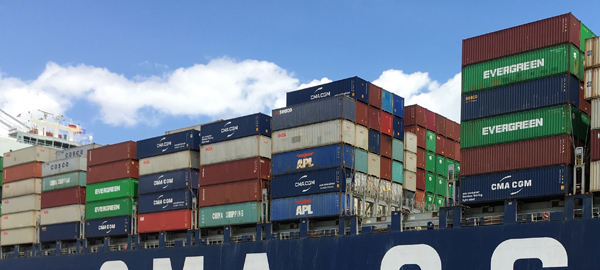
FTZ Staff Activity
- FTZ Board Staff processed a Subzone (S-137-2022) in FTZ 61Z on behalf of Oldach Associates, LLC, in Catano, PR on September 26, 2022
- FTZ Board Staff processed a Subzone (S-138-2022) in FTZ 167 on behalf of Burger Boat Company, in Manitowoc, WI
- FTZ Board Staff processed a Minor Boundary Modification (S-139-2022) in FTZ 104 on behalf of MS International Inc., in Pooler, GA on August 11, 2022
- FTZ Board Staff processed a Minor Boundary Modification (S-140-2022) in FTZ 33 on behalf of RAK Porcelain USA Inc., in Imperial, PA on August 15, 2022
- FTZ Board Staff processed a Minor Boundary Modification (S-141-2022) in FTZ 2 on behalf of Koch Fertilizer, LLC, in Arabi, LA on August 15, 2022
- FTZ Board Staff processed a Minor Boundary Modification (S-142-2022) in FTZ 241 on behalf of Almod Diamonds Ltd., Inc., in Miramar, FL on August 17, 2022
- FTZ Board Staff processed a Minor Boundary Modification (S-143-2022) in FTZ 281 on behalf of The Chefs’ Warehouse of Florida, LLC, in Miami, FL on August 18, 2022
- FTZ Board Staff processed a Minor Boundary Modification (S-144-2022) in FTZ 90C on behalf of PPC Broadband, Inc., in East Syracuse, NY on August 18, 2022
- FTZ Board Staff processed a Minor Boundary Modification (S-145-2022) in FTZ 99I on behalf of Bloom Energy Corporation, in Newark, DE on August 23, 2022
- FTZ Board Staff processed a Minor Boundary Modification (S-146-2022) in FTZ 70 on behalf of Material Handling Services Limited, in Detroit, MI on August 23, 2022
- FTZ Board Staff processed a Minor Boundary Modification (S-147-2022) in FTZ 61Q on behalf of Autogermana, Inc., in San Juan, PR on August 24, 2022
- FTZ Board Staff processed a Minor Boundary Modification (S-148-2022) in FTZ 84 on behalf of Dixie Cullen Interests, Inc., in Houston, TX on August 24, 2022
- FTZ Board Staff processed a Minor Boundary Modification (S-149-2022) in FTZ 138 on behalf of JOANN Fabrics and Crafts, in West Jefferson, OH on August 29, 2022
- FTZ Board Staff processed a Minor Boundary Modification (S-150-2022) in FTZ 144 on behalf of IDO Free Trade Zone Corp., in Darien, GA on August 29, 2022
- FTZ Board Staff processed a Minor Boundary Modification (S-151-2022) in FTZ 81F on behalf of CAN-ONE (USA), Inc., in Nashua, NH on August 29, 2022
- FTZ Board Staff processed a Minor Boundary Modification (S-152-2022) in FTZ 281 on behalf of Trade Management Solutions, LP, in Medley, FL on August 30, 2022
- FTZ Board Staff processed a Minor Boundary Modification (S-153-2022) in FTZ 281 on behalf of Pas Cargo USA, Inc., in Hialeah Gardens, FL on August 30, 2022
- FTZ Board Staff processed a Minor Boundary Modification (S-154-2022) in FTZ 281 on behalf of Suntyx, LLC, in Hialeah Gardens, FL on August 30, 2022
- FTZ Board Staff processed a Minor Boundary Modification (S-155-2022) in FTZ 32 on behalf of Cargo Express International, Inc., in Miami, FL on August 30, 2022
- FTZ Board Staff processed a Minor Boundary Modification (S-156-2022) in FTZ 32 on behalf of Worldwide Logistics, Inc. FL, in Medley, FL on August 31, 2022
- FTZ Board Staff processed a Minor Boundary Modification (S-157-2022) in FTZ 21F on behalf of Volvo Car USA dba Volvo Car U.S. Operations, in Ridgeville, SC on September 1, 2022
- FTZ Board Staff processed a Minor Boundary Modification (S-158-2022) in FTZ 116E on behalf of Golden Pass LNG Terminal LLC, in Baytown, TX on September 1, 2022
- FTZ Board Staff processed a Subzone (S-159-2022) in FTZ 161 on behalf of Great Plains Manufacturing, Inc., in Salina, KS
- FTZ Board Staff processed a Minor Boundary Modification (S-160-2022) in FTZ 142 on behalf of National Refrigerants, lnc., in Rosenhayn, NJ on September 7, 2022
- FTZ Board Staff processed a Subzone (S-161-2022) in FTZ 98 on behalf of BLG Logistics of Alabama LLC, in Northport, AL
- FTZ Board Staff processed a Termination (S-161-2022) in FTZ 38 on behalf of Global Trade Logistics, LLC, in Greer, SC on September 8, 2022
- FTZ Board Staff processed a Termination (S-162-2022) in FTZ 38Q on behalf of Commerce Warehouse Group, LLC, in Rock Hill, SC on September 8, 2022
- FTZ Board Staff processed a Minor Boundary Modification (S-164-2022) in FTZ 64H on behalf of North Florida Warehouse, FTZ d/b/a JZI IntermodaLogistics, in Jacksonville, FL on September 12, 2022
- FTZ Board Staff processed a Minor Boundary Modification (S-165-2022) in FTZ 35 on behalf of PEL Health dba Piramal Pharma Solutions, in Sellersville, PA on September 9, 2022
- FTZ Board Staff processed a Minor Boundary Modification (S-166-2022) in FTZ 72 on behalf of Rhenus Warehouse Solutions IND., LLC., in Plainfield, IN on September 9, 2022
- FTZ Board Staff processed a Minor Boundary Modification (S-167-2022) in FTZ 43G on behalf of Zoetis Services, LLC, in Battle Creek, MI on September 9, 2022
- FTZ Board Staff processed a Minor Boundary Modification (S-168-2022) in FTZ 70 on behalf of Hill Machine Works, LLC, in Fraser, MI on September 16, 2022
- FTZ Board Staff processed a Minor Boundary Modification (S-169-2022) in FTZ 181 on behalf of JOANN Fabrics and Crafts, in Hudson, NY on September 16, 2022
- FTZ Board Staff processed a Minor Boundary Modification (S-170-2022) in FTZ 26F on behalf of Precision Components International, in Columbus, GA on September 19, 2022
- FTZ Board Staff processed a Minor Boundary Modification (S-171-2022) in FTZ 50 on behalf of LL Flooring Services, LLC, in Pomona, CA on September 19, 2022
- FTZ Board Staff processed a Minor Boundary Modification (S-172-2022) in FTZ 50 on behalf of Weida Freight System, Inc., in Compton, CA on September 19, 2022
- FTZ Board Staff processed a Minor Boundary Modification (S-173-2022) in FTZ 75O on behalf of TSMC Arizona Corporation, in Avondale, AZ on September 20, 2022
- FTZ Board Staff processed a Termination (S-174-2022) in FTZ 32 on behalf of BLU Products, Inc., in Doral, FL on September 20, 2022
- FTZ Board Staff processed a Minor Boundary Modification (S-175-2022) in FTZ 77J on behalf of Neotek Corporation, Inc., in Memphis, TN on September 21, 2022
- FTZ Board Staff processed a Minor Boundary Modification (S-176-2022) in FTZ 35E on behalf of Philly Shipyard Inc., in Philadelphia, PA on September 21, 2022
- FTZ Board Staff processed a Minor Boundary Modification (S-177-2022) in FTZ 93 on behalf of Ideal Fastener Corporation, in Oxford, NC on September 21, 2022
- FTZ Board Staff processed a Minor Boundary Modification (S-178-2022) in FTZ 70 on behalf of L.S. Wholesale, Inc., in Troy, MI on September 21, 2022
- FTZ Board Staff processed a Minor Boundary Modification (S-179-2022) in FTZ 26 on behalf of SJW Logistics, in Lithia Springs, GA on September 26, 2022
- FTZ Board Staff processed a Minor Boundary Modification (S-180-2022) in FTZ 49 on behalf of Dynamic Distribution Services, Inc., in South Kearney, NJ on September 28, 2022
- FTZ Board Staff processed a Subzone (S-181-2022) in FTZ 207 on behalf of voestalpine High Performance Metals LLC, in South Boston, VA
FTZ Board Activity
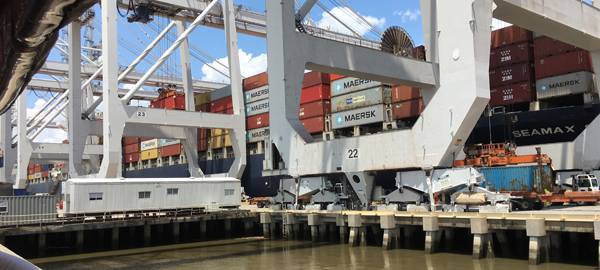
The “R” Word
It’s back. Despite strong employment numbers, talk of a global and US recession is getting louder. How fast our economy might slow is confusing the stock market, leading to wild swings but a decidedly downward direction for the year. Global investors seeking a safe haven are buying US dollars. That makes it a great time to visit Europe and Asia, but a lousy time to try and sell your US products there.
Even though we stopped doing the King and Queen thing 250 years ago, it was hard not to be impressed by Queen Elizabeth’s regal personage. May she rest in peace. With sharp challenges ahead, we will quickly learn if the loss of her steady hand will spell trouble in the UK.
The new federal government fiscal year started on Saturday. The House passed a Continuing Resolution less than 12 hours before funding would have lapsed and caused a shutdown. The CR only provides for 10 more weeks of government operation. The new fiscal year means MPF caps went up for US importers, including FTZs.
Unresolved contract negotiations for rail and dock workers remain a black cloud this month hanging over US supply chains. Hurricane Ian and its wide path of destruction in Florida and Puerto Rico will also demand close attention from the trade this month.

